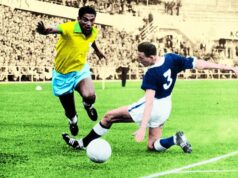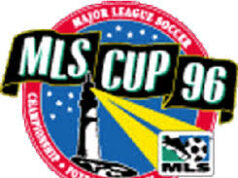On Wednesday, March 7, Jeff Carlisle published his now annual interview with MLS commissioner, Don Garber. Despite the obvious temptation to ask soft questions prior to the start of the league’s 17th season, thereby allowing Carlisle’s publication to serve as a publicity wing of the burgeoning league, the journalist asked complex questions that challenged Garber throughout the interview. From concerns over the recent influx of foreign players to the changing face of the average match attendee (tolerant though largely indifferent soccer moms have given way to vocal, informed young professionals), the discussion was never less than fascinating, and Garber’s responses astute, articulate, occasionally indignant, and essential to understanding the future of MLS.
Eschewing any business model smacking of a get-rich-quick scheme, which should hearten club fans who question their owners’ commitment, Garber envisioned and has, for the most part, implemented a patient, organic growth for the league. While facets of this plan have rankled a large and largely abusive portion of the US soccer base (the summer season, the playoffs, the salary cap, and the single-entity structure, to name a few), which they see as an Americanization of the world’s game, nearly all of these have been cogently argued by Garber as making good business and good soccer sense. The summer season draws the largest crowd, despite sometimes conflicting with the international schedule, the playoffs represent the best alternative to a relegation/promotion system, which may be adopted when a viable second division arises, the salary cap ensures parity and a moderate risk profile for the league, and the single-entity structure is the best defense against a repetition of the past (i.e. NASL).
In short, most of these early decisions should and likely will be reassessed at a later, more amenable date. The one fundamental feature of MLS that should not be re-evaluated (and I strongly urge small-market club owners to retain a good contract lawyer now in the event of said re-evaluation) is the league’s single-entity structure. Without a “welfare state” league, where the credits and debits are, in an essential sense, shared on one ledger, clubs with smaller television and stadium audiences than others would flounder. His contractions of Miami and Tampa Bay came early in his tenure and part of an attempt to keep the league from being delivered stillborn. The dissolution of two of the least attended clubs, FC Dallas and Columbus Crew, would be considered today, if at all, far less than the sale of one of those clubs, as both are owned by The Hunt Brothers Group. Similarly, Garber has pressed the sale of one of AEG’s holdings, though considering the relative success of Los Angeles and Houston, I doubt with much zeal.
Columbus, in its current incarnation, represents a fascinating case study in the short history of the league. Never aspiring to overtake the city’s beloved football team, the Crew was neverthess heralded as an exemplar for other clubs, if mostly for Lamar Hunt’s commitment to the locals and the league manifest in the first soccer-specific stadium in America. After experiencing a few modest highs in its first decade, due mostly to a trio of prolific strikers (Buddle, Cunningham, McBride), it slumped once more before winning back-to-back Supporter’s Shields in 2008-09 under the off-field guidance of Sigi Schmid and on-field guidance of Guillermo Barros Schelotto. An appealing mix of grit and guile brought record crowds and a decent amount of national attention. The Crew carried their weight during those years with Schelotto; thanks to fielding a side easy on the eyes and on the pocketbook, they were less reliant upon the larger clubs to keep the domestic game in the national consciousness and fund their expenditures.
After the sudden and, to many, inexplicable dismissals of Schelotto and Co. by the current coaching staff and head office, the story has changed. Without identifiable players (e.g. Hejduk), skilled playmakers or forwards capable of creating scoring opportunities, fan commitment has deteriorated to such an extent that when the Crew received only one nationally-televised broadcast for the 2012 season, not a whisper of dissatisfaction was heard. The league, already tired of shouldering their load, sent a message that the fansquietly accepted. Add to this fact that Crew stadium, once prized as a living soccer landmark, can no longer compete with other stadia in providing a memorable gameday experience.
In other leagues around the world, a period of commercial and competitive stagnancy in one club is the opportunity for growth in another. The MLS operates more mercifully; lean years are rarely dire with the support of a single-entity infrastructure. Whereas teams in the English Premier League or Bundesliga who play poorly are likely to find themselves in an entirely new table the next season, MLS clubs have eternity to get it right. For better or worse, survival is not dependent on performance.
For fans of current powerhouse clubs such as Real Salt Lake and Sporting Kansas City, the forgiveness of Major League Soccer may irritate. Yet the league’s design makes words such as powerhouse devoid of meaning; today’s champions may be tomorrow’s chumps. Such wild swings may not promote comparisons with the EPL and La Liga, but that may not be such a bad thing. What domestic clubs big and small, strong and weak, may take from this is that pressure to achieve comes from within. That is, fans alone can exert the necessary pressure to fire a coach, change a lineup, even broker, if indirectly, the sale of the club. When considering this democratic groundswell, which saves clubs such as the homely but beloved Columbus Crew, perhaps the Americanization of the beautiful game is not so objectionable after all.








